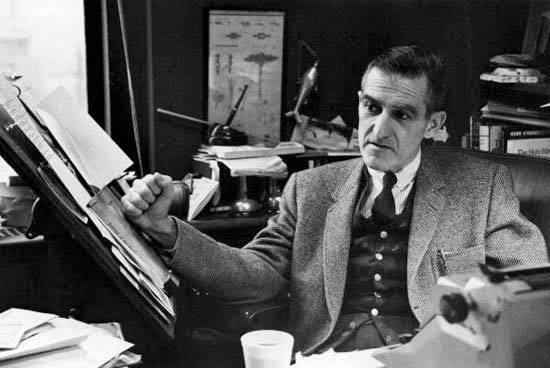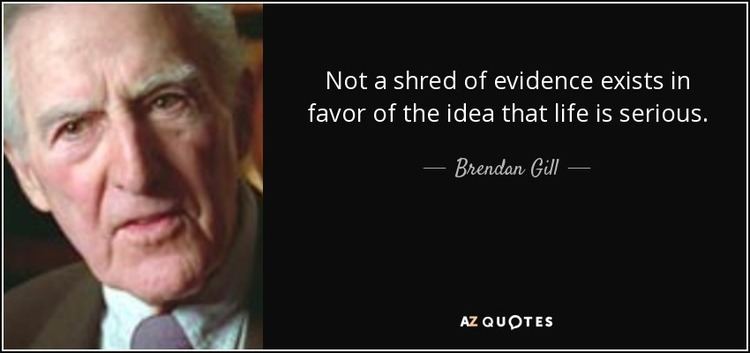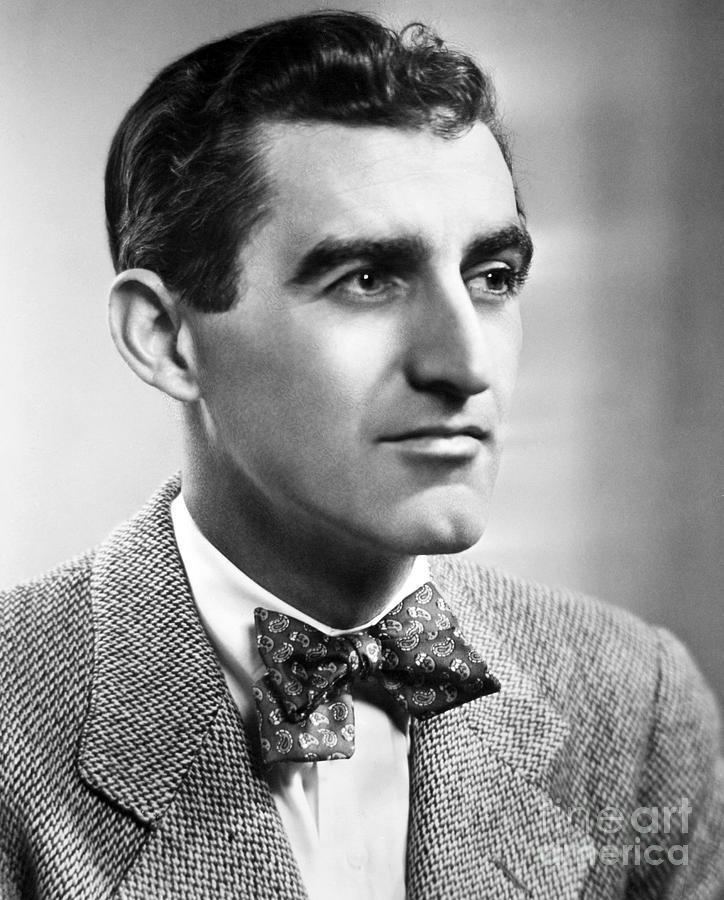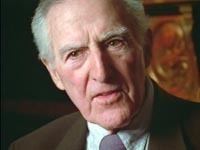Name Brendan Gill Role Critic | Education Yale College (1936) | |
 | ||
Children Michael Gates Gill, Kate Gill Awards Guggenheim Fellowship for Creative Arts, US & Canada Books Here at The New Yorker, Late Bloomers, Many Masks: A Life of Fra, The portable Dorothy P, Guide to New York City Land | ||
Brendan gill joins cory booker s campaign for senate
Brendan Gill (October 4, 1914 – December 27, 1997) wrote for The New Yorker for more than 60 years. He also contributed film criticism for Film Comment and wrote a popular book about his time at the New Yorker magazine.
Contents
- Brendan gill joins cory booker s campaign for senate
- Inside new york s art world brendan gill
- Biography
- Death
- Legacy
- Offices held
- Books
- Articles
- References

Inside new york s art world brendan gill
Biography

Born in Hartford, Connecticut, Gill attended the Kingswood-Oxford School before graduating in 1936 from Yale University, where he was a member of Skull and Bones. He was a long-time resident of Bronxville, New York, and Norfolk, Connecticut.

In 1936 The New Yorker editor St. Clair McKelway hired Gill as a writer. One of the publication's few writers to serve under its first four editors, he wrote more than 1,200 pieces for the magazine. These included Profiles, Talk of the Town features, and scores of reviews of Broadway and Off-Broadway theater productions.

Gill shocked literary circles in 1949 with his brutally devastating review of the novel "A Rage to Live," by John O'Hara. "During the preceding two decades O'Hara had been The New Yorker's most prolific contributor of stories" (no fewer than 197 by one count). Gil disparaged his colleague's book as "a formula family novel" turned out by "writers of the third and fourth magnitude in such disheartening abundance" and declared it "a catastrophe" by an author who "plainly intended to write nothing less than a great American novel." More recent critics have called Gill's review a "savage attack" and a "cruel hatchet job." Thereafter, O'Hara quit writing stories for the magazine for more than a decade, and when readers complained to Gill for driving O'Hara away, Gill deflected blame onto another New Yorker contributor, James Thurber, for stirring up animosity. At a forum on O'Hara's legacy held in 1996, Gill stood up in the crowd to recall his attack on O'Hara nearly 50 years before, rationalizing it by pleading, "I had to tell the truth about the novel."

As The New Yorker's main architecture critic from 1987 to 1996, Gill was a successor to Lewis Mumford as the author of the long-running "Skyline" column before Paul Goldberger took his place. A champion of architectural preservation and other visual arts, Gill joined Jacqueline Kennedy's coalition to preserve and restore New York's Grand Central Terminal. He also chaired the Andy Warhol Foundation for the Visual Arts and authored 15 books, including Here at The New Yorker and the iconoclastic Frank Lloyd Wright biography Many Masks.
Death
Brendan Gill died of natural causes in 1997, at the age of 83. In a New Yorker "Postscript" following Gill's death, John Updike described him as “avidly alert to the power of art in general.”
Legacy
Gill's son, Michael Gates Gill, is the author of How Starbucks Saved My Life: A Son of Privilege Learns to Live Like Everyone Else. His youngest son, Charles Gill, is the author of the novel The Boozer Challenge.
